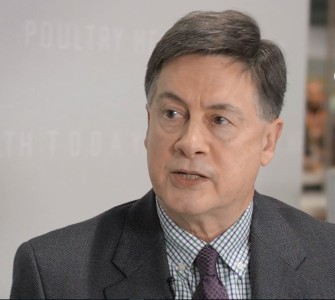Antibiotics in poultry requires ethical dialogue
The editor of WATT PoultryUSA shares his thoughts on the US poultry industry. Gary Thornton discusses legislation, trends, food safety issues and more relating to the poultry and meat industries in the US.
Do poultry and meat producers often make the wrong arguments for the use of antibiotics in their flocks and herds? Possibly so, and this is reflected in public opinion.
A National Institute for Animal Agriculture (NIAA) white paper in 2011 noted longstanding perceptions, misperceptions, and beliefs among consumers and consumer groups about the animal agriculture industry:
- “Antibiotics are used indiscriminately on the farm, with minimal oversight of either veterinarians or FDA.”
- “Antibiotics given to animals will end up in the food and possibly jeopardize my family’s health.”
- “Using antibiotics on the farm contributes to the creation of resistant pathogens that threaten health.”
Consumer perceptions frame public policy, and the Food and Drug Administration (FDA)’s Veterinary Feed Directive being implemented in 2016 is a regulatory beginning in response to such concerns, which on their face are over-simplifications of complex issues that won’t be resolved with simplistic approaches.
Antibiotics metrics only part of the story
Speaking at the NIAA Antibiotics Symposium November 3, 2015, Mike Apley, veterinarian and professor at Kansas State University, pointed to the need for animal agriculture to engage in a social and ethical dialogue with consumers about the use of antibiotics in food-producing animals.
Referring to the potential for an over-reliance on merely cutting overall antibiotic usage in food production animals, Apley said, “The thing about the metrics [of antibiotic usage] is that to just see the numbers reported in the newspaper and draw conclusions is completely inappropriate.”
So what is the answer when the scientific data about the use of antibiotics in poultry and other food animals is complex and the implications are not always clear-cut?
Going forward, the dialogue with consumers and stakeholders about antibiotics in poultry and meat must include more than science and data. The dialogue with consumers must include social and ethical dimensions.
Poultry stewardship a key issue
Apley stressed the importance of stewardship on the part of meat and poultry producers and the ethical imperative to provide antibiotics in animals’ veterinary care where it is needed. This, of course, can present ethical dilemmas that society needs to resolve. For example, how should the ethical imperative to provide appropriate veterinary care of animals weigh against the potential risk of the development of antimicrobial resistance in human populations?
A different ethical dilemma is posed in the judicious use of antibiotics in food production animals. Producers must avoid disease challenges where feasible and thereby reduce the need for antibiotics. But where is the line of feasibility to be drawn? And what level of resulting cost is acceptable to society? Some animal production systems that might reduce disease exposure would dramatically increase costs, raise food prices and even reduce overall food production. That is surely a societal cost, and who decides its allocation?

Consumers’ feelings about the use of antibiotics in food production animals ranges depending on the amount of regulation.
If the trajectory of the public dialogue about antibiotics in food animals is not changed, beef, pork and poultry producers won’t have an answer for regulators’ “cut the use” goals.
Gary Thornton is editor of WATT PoultryUSA. To contact Thornton, email gthornton@wattglobal.com.
Posted on March 4, 2016














